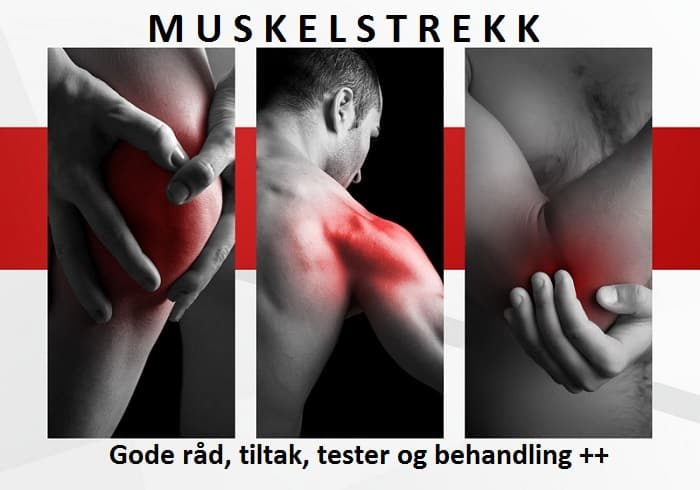muscle Pull
muscle Pull
Muscle strain, muscle damage or muscle tearing means damage to a muscle or muscle attachment. Muscle tension can occur with an abnormally high strain on muscles during daily activities, heavy lifting, sports or in a work context.
Muscle damage can occur by stretching or tearing (partial or complete rupture) of the muscle fibers where the tendons attach to the legs. Such damage to the muscles can also in some cases cause damage to small blood vessels, which in turn can cause local bleeding, swelling, and pain caused by nerve irritation in the area.
Symptoms of muscle strain / muscle damage
Typical symptoms of muscle strain and / or injury:
- Swelling or redness in the damaged area
- Pain at rest
- Pain when the specific muscle or joint of that muscle is used
- Weakness in damaged muscle or tendon attachment
- No reaction in the musculature (Indicates total tearing)
Should I get treatment or seek medical attention?
If you suspect that there is a serious injury, you should contact a doctor or emergency room. This also applies if you do not notice any improvement within 24 hours of debut. If you hear a "popping sound" in connection with the injury, can not walk, or if there is extensive swelling, fever or open cuts - then you should also contact the emergency room.
Clinical examination of muscle tension and muscle damage
A publicly licensed clinician (physician, chiropractor, manual therapist) can all perform a medical history review and clinical examination of the problem. This study can answer whether the muscle is stretched, partially or completely torn. If it is a total rupture then this can involve a much longer healing process and even surgery. Imaging is only needed if the clinical examination does not fully answer the problem.
Self-treatment of muscle tension and muscle damage
To minimize an overreaction on the part of the body and unnecessary swelling (from damaged, local blood vessels), you can use icing. The muscle should also rest in a slightly stretched position and preferably with light compression. Heat can be used against muscle strain at a later stage - after the swelling has subsided (approximately 48-72 hours, but this varies). Premature use of heat can increase swelling and pain.
What can I do even for muscle pain?
1. General exercise, specific exercise, stretching and activity are recommended, but stay within the pain limit. Two walks a day of 20-40 minutes make good for the whole body and sore muscles.
2. Trigger point / massage balls we strongly recommend - they come in different sizes so you can hit well even on all parts of the body. There is no better self help than this! We recommend the following (click the image below) - which is a complete set of 5 trigger point / massage balls in different sizes:
3. Training: Specific training with training tricks of various opponents (such as this complete set of 6 knits of different resistance) can help you train strength and function. Knit training often involves more specific training, which in turn can lead to more effective injury prevention and pain reduction.
4. Pain Relief - Cooling: Biofreeze is a natural product that can relieve pain by cooling the area gently. Cooling is especially recommended when the pain is very severe. When they have calmed down then heat treatment is recommended - it is therefore advisable to have both cooling and heating available.
5. Pain Relief - Heating: Warming up tight muscles can increase blood circulation and reduce pain. We recommend the following reusable hot / cold gasket (click here to read more about it) - which can be used both for cooling (can be frozen) and for heating (can be heated in the microwave).
Recommended products for pain relief in muscle pain
Biofreeze (Cold / cryotherapy)
The PRICE principle is used for muscle damage.
P (Protect) - Protect the muscle from further damage.
R (Rest) - Rest and recovery of the injured muscle. Avoid similar activities and strains that caused the injury.
I (Ice) - For the first 48-72 hours after an injury, you can use icing. Use icing 4-5x a day after the "15 minutes on, 30 minutes off, 15 minutes on" cycle. Ice is a very effective way to alleviate inflammatory reactions and pain.
C (Compression) - Compression, adapted as such, can provide support and reduce swelling. Make sure that you do not fasten any elastic bandage too tightly.
E (Elevation) - Raise the injured to reduce swelling.
Otherwise, easy movement, preferably isometric at first, is encouraged to speed up the healing process.
Treatment of muscle strain and muscle damage
Physical treatment, massage and muscular work can help you relieve symptoms, increase healing response and improve function in the injured area.
Painkillers for muscle strain and muscle damage
NSAIDS (non-steroidal anti-inflammatory drugs), such as ibuprofen, can relieve pain and swelling during the acute phase of the problem. However, as studies have shown, unnecessary use of such drugs can also lead to longer healing times, as such drugs can slow down the natural healing of the injury.
How to prevent muscle strain and muscle damage?
Here are some great tips on how to prevent such injuries:
- Training of stability muscle
- Clothes daily - and especially after exercise
- Warm up well before exercising
NEXT PAGE: - Muscle pain? This is why!
 - Feel free to follow Vondt.net at YOUTUBE
- Feel free to follow Vondt.net at YOUTUBE
 - Feel free to follow Vondt.net at FACEBOOK
- Feel free to follow Vondt.net at FACEBOOK
Feel free to contact us if you have any questions or use the comment box below.









Leave a reply
Want to join the discussion?Feel free to Contribute!